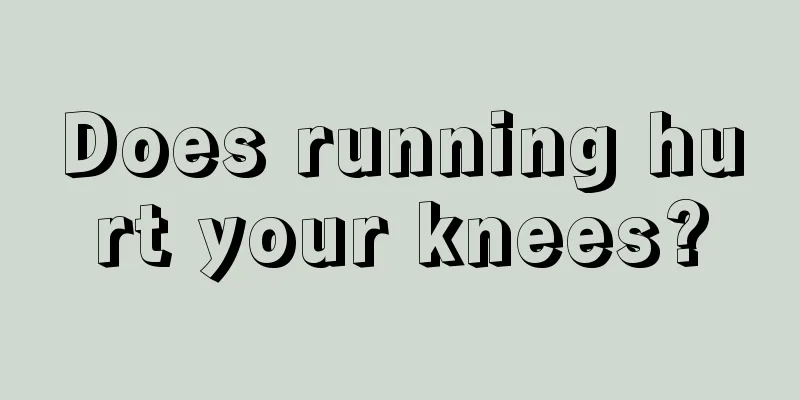Muscle acid removal after exercise

|
Whether you like fitness or exercise, muscle soreness is easy to occur. The main reason is that the muscles produce a large amount of lactic acid. The human body can consume some of this lactic acid, but the excess will hinder blood circulation, thus causing soreness. Muscle acid removal after exercise has a very good effect on relieving soreness, and we can implement it from many aspects. So, what are some ways to remove muscle acid after exercise? Let’s take a look below. 1. Cold compress in the early stage Immediately after heavy weight training, use ice packs to cool the target muscles. Generally, the cold compress lasts for 10 to 15 minutes. Place clothing or towels between the ice pack and the skin to prevent frostbite. Or a cold shower. The national weightlifting team has a special ice and snow room in the General Administration of Sports' Heavy Duty Arena. After heavy weight training, the national team players go directly into the ice and snow room with a temperature set at 0 degrees in their underwear in order to speed up their recovery. 2. Nutritional supplements Consuming a large amount of carbohydrates within 2 hours after training can help restore muscle glycogen levels, so you should have a meal within 2 hours after training. There is no need to take supplements for general fitness training. Just make sure to replenish carbohydrates in a timely manner, eat more fruits and vegetables, and supplement food protein. 3. Strengthen stretching It is mainly to stretch the sore muscles 12 hours after training, or when training other items the next day. 4. Acid removal training Acid removal training is the training to remove excess lactic acid from muscles. Training conditions: This training needs to be performed 24 to 48 hours after exercise. If the muscles are still sore at this time, acid-removal training should be performed on the basis of excluding muscle strain and soft tissue injury. The principle of acid removal training: use slow muscle movements throughout the entire range to increase blood circulation in the painful area, especially to increase blood circulation deep in the muscles in the painful area, clear out lactic acid accumulated in the leg muscles, and ultimately achieve the purpose of relieving pain and increasing recovery speed. Tip: Although hot compress can also increase blood circulation, it can only increase blood circulation in the superficial layers of the skin and muscles, and has little effect on the deep muscles. The whole process of slow muscle movement and acid removal training can stimulate the deep muscles for better results. The location of muscle soreness after training varies due to different training methods, so the acid-removal training methods for different muscle soreness are also different. Let me give you a practical example of the sore thigh muscles that often occur the day after your first mountain climb. This method is also suitable for middle-aged and elderly people. The specific method is: squat with support + quadriceps stretch. Action details: Stand about half a meter away from the bed or other fixed object, facing the bed. Slowly squat down until your thighs are parallel to the ground. At this time, muscle soreness will worsen. If you are unstable when standing, you can hold the bed with both hands to increase your body balance. After squatting, stand up slowly; then squat again, and repeat this process 20 to 30 times. Pay attention to the soreness in your legs. When you do this movement about 15 to 20 times, the soreness in your legs will disappear or subside. After completing the prescribed number of repetitions, immediately perform static stretching for 1 minute. Stretching method: The trainee holds a fixed object with one hand to maintain body balance, then uses one leg as the supporting leg, bends the other leg at the knee upward, and uses the other hand to grab the front of the ankle and pull it upward; the trainee can feel an obvious stretching sensation on the front of the thigh, and try to make the heel of the bent leg touch the buttocks, holding for 30 seconds to 1 minute; then switch legs and stretch. After stretching, the trainee paces on the ground for 60 to 90 seconds, and then completes the next full squat with support + quadriceps stretch. Number of training sets: Perform 48 hours after the onset of soreness, twice a day, 2 to 4 sets each time, and stop training when the soreness completely disappears. |
<<: What exercises can I do for my lower body to lose weight?
>>: How to train back muscles with dumbbells
Recommend
Exercise for weight loss: a blind spot that many people don’t see
Exercise to lose weight is a method of weight los...
Can jogging reduce belly fat?
People are now paying more and more attention to ...
Disadvantages of climbing stairs to lose weight
Climbing stairs to lose weight can be done anytim...
What is the correct way to do sit-ups to reduce belly fat?
Sit-ups can not only exercise the body, but also ...
How to do yoga before bed for women
Today's women have high requirements for beau...
How long is the best time to exercise each time?
Physical exercise helps to maintain good health. ...
What is it like to practice yoga?
Some people spend money to learn how to cook, som...
What are the benefits of doing sit-ups for a long time?
Gynecological diseases are one of the most common...
How to use the tensioner?
The puller can help people get good exercise resu...
Will running reduce breast size?
As we all know, people who run regularly will gra...
What sportswear should I wear for running?
As our living conditions improve, many family mem...
How to lose weight in your legs while sleeping?
Every girl dreams of having a pair of thin and lo...
Fitness equipment for buttocks
In addition to the common people who want to lose...
Can push-ups train your abdominal muscles?
Many men like to exercise by doing push-ups. Push...
What are the stretching exercises after skipping rope?
Skipping rope is actually a form of exercise. Bec...









